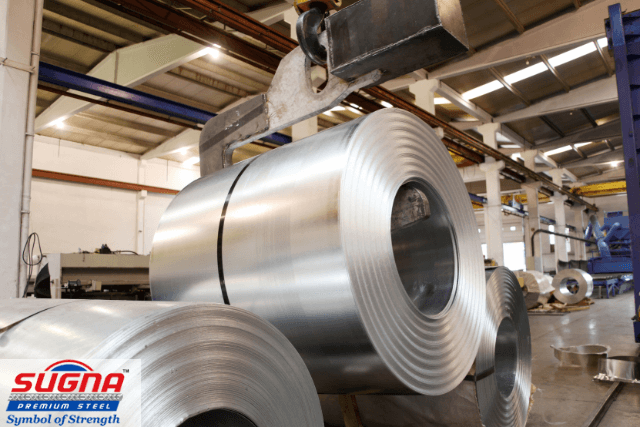Hey there! Are you curious about CRCA steel but don’t know where to start? You’re are the right place! We’re diving deep into the world of CRCA steel in this post. Let’s simplify things and understand what it’s all about.
What is CRCA Steel?

CRCA stands for “Cold Rolled Close Annealed” steel. Sounds a bit technical, right? Let’s break it down:
- Cold Rolled: This means the steel is rolled at room temperature. It makes the steel smoother and gives it a consistent thickness.
- Close Annealed: This is a heating and cooling process which makes the steel stronger.
In simple words, CRCA steel is processed steel that is both smooth and strong.
Why is CRCA Steel Used?
Now that you know what CRCA steel is, you might wonder, why do we need it? Here’s why it’s popular:
- Strength: It’s robust and durable, making it great for heavy-duty applications.
- Smooth Surface: Its even surface makes it ideal for jobs where appearance matters.
- Versatility: It can be bent and shaped easily without breaking.
Common Uses of CRCA Steel
| Industry | Usage |
|---|---|
| Automotive | Car bodies, engine parts |
| Furniture | Desks, cabinets |
| Construction | Roofing sheets, tubes |
| Appliances | Refrigerators, washing machines, ovens |
Benefits of CRCA Steel
The use of CRCA steel isn’t just because of tradition. There are genuine benefits! Here are some:
- Consistency: You can always expect the same quality.
- Cost-Effective: It might not always be the cheapest option, but its durability and strength mean you save in the long run.
- Easy to Work With: Its flexibility allows manufacturers to get creative!
How is CRCA Steel Made?
Without turning this into a physics class, let’s get a basic idea:
- Hot Rolling: The steel is initially hot-rolled. It’s heated and passed through large rollers.
- Pickling: To remove the scale formed during hot rolling, the steel is bathed in a solution, usually an acid.
- Cold Rolling: Post-pickling, the steel is then rolled again, but this time at room temperature.
- Annealing: Finally, the steel is heated in a furnace and then cooled slowly, giving it its strength.
Buying Tips for CRCA Steel
If you’re looking to buy CRCA steel for a project, here are some things to keep in mind:
- Thickness: Make sure you pick the right thickness for your project.
- Supplier Reputation: Go for suppliers known for quality.
- Certifications: Ensure the steel meets industry standards.
Wrapping Up
CRCA steel is more than just a fancy term – it’s a versatile and robust material used in various industries. Whether you’re buying it for a project or just quenching your thirst for knowledge, we hope this guide clarified the basics for you.
Got questions or want to learn about another topic? Drop a comment below. Remember, knowledge is power, and there’s always something new to learn! Cheers to becoming a CRCA steel pro! 🌟

